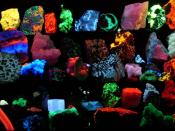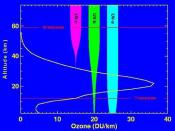Ultraviolet radiation (UV) is an electromagnetic spectrum between x-rays and visible light. The sun radiates energy in a wide range of wave lengths. The shorter the wavelength is the more radiation and potential for harm can come from it. The spectrum is divided into three categories UVA (315-400 nm), UVB (280-315 nm), and UVC (100-280 nm). The sun we all know is the natural source of radiation, and then we have tanning booths and black lights to name a few of artificial radiation.
Environmental factor can influence the effects of the UV rays. The higher the sun is the greater the radiation levels are this is usually around noon and more during the summer months. The closer to the equator you are the higher the radiation also. Even though we may think that clouds mean we won't fell the harmful effects from the sun we are wrong. Clouds don't block out the effects of the UV rays and sometime may even make them greater.
The rays can be reflected off the water or snow and can have the same effects as if we were just lying out in the sun.
UVC rays are hardly ever observed because they are absorbed into the atmosphere. Germicidal lamps are used to help emit UVC rays because of their ability to kill bacteria. UVC rays are absorbed in the dead layers of the epidermis in humans. If there is an accidental overexposure of UVC rays in can cause snow blindness or severe sunburn that usually clears up in a day or two but is very painful.
UVB rays are the most destructive of all the UV rays because it has enough energy to cause photochemical damage to our cellular DNA. We as humans need the UVB ray for synthesis of vitamin D. Some...


